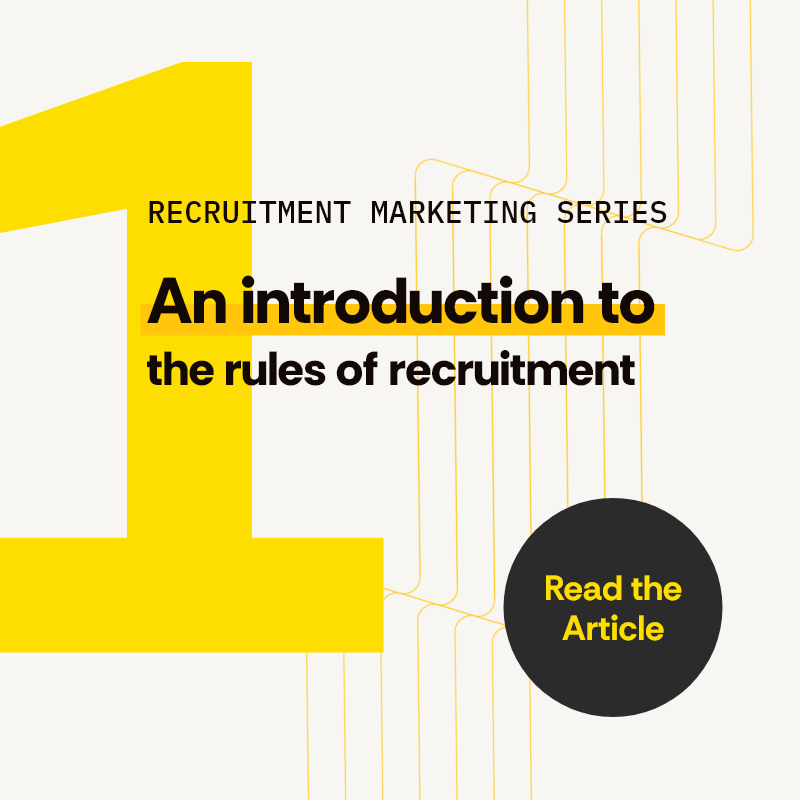Just as companies compete for customers, they also compete for talent. Top candidates have many choices, and the Internet floods them with options, so employers must actively market themselves to stand out. This objective is called recruitment marketing.
Finding great talent is tough these days. Following the Great Resignation, quit rates have returned to pre-pandemic levels, thereby reducing the pipeline of job seekers. Candidates are increasingly behaving like customers who comparison-shop and plan travel online, checking employee reviews, social media, and a company’s online presence before applying.
First impressions matter, and branding plays a crucial role. Your brand pillars guide should guide a consistent message in all of your recruitment communications.
Consider this article your introduction to the new rules of online recruiting. We’ll explain how to apply proven marketing techniques and new technologies to transform your approach to hiring and building stronger teams. In future posts from this series, we’ll provide solutions to real challenges you’re likely facing, such as:
The value of online recruitment marketing tools reached $11 billion in 2023, and their value is expected to grow to $41 billion by 2032.
- Writing job descriptions for better engagement
- Improving career web pages
- Using recruitment marketing automation to reach top talent
No guesses or regurgitation here, just lots of proven approaches and practical expertise on using recruitment marketing to attract better candidates. Let’s get started.
What is recruitment marketing?
Recruitment marketing is an emerging human resources strategy to level up team-building. It involves applying the same deliberate, brand-centric, audience-centric approach to pursuing hires as you do sales.
It’s a universal truth in business that the team is the most important key to success. Management expert Jim Collins, the author of Good to Great, goes one step further: “People aren’t the most important asset. The right people are.” Recruitment marketing is the latest frontier in the ever-evolving search for a dream team.
By applying principles of branding and the customer journey, recruiters can effectively fill their pipelines with top talent by measuring results, just as marketers do to improve efficiency and outcomes.
Measuring results: Top recruitment marketing KPIs
Data is power. Recruitment marketing yields insights to improve talent acquisition, saving time and money. As a bonus, it whittles down the “no” stack of resumes you dread answering. KPIs include:
- Applications received
- Application completion rate
- Employee hours spent on manual tasks versus AI-powered tasks
- Time to hire
- Employer review ratings
- Turnover rate
- Employee satisfaction scores
Marketing throughout the customer journey
Recruitment marketing follows a journey similar to product marketing. Here’s how it unfolds.
Stage 1: Awareness
- Objective: Stand out in a saturated job market.
- Challenges targeted: Talent shortages, wage competition, employer brand awareness.
- Recruitment marketing tools: Digital ads, social media campaigns, storytelling.
Stage 2: Consideration
- Objective: Showcase work culture and benefits beyond salary.
- Challenges targeted: Candidate ghosting, pay expectations, lack of engagement.
- Recruitment marketing tools: Email sequences, SMS outreach, and retargeting.
Stage 3: Application and hiring
- Objective: Improve speed and reduce drop-off.
- Challenges targeted: Slow hiring processes, ghosting, interview no-shows.
- Recruitment marketing tools: Clear, compelling job posts and streamlined, AI-powered communication.
Stage 4: Retention and engagement
- Objective: Keep hires happy.
- Challenges targeted: Retention, lack of employee feedback, ongoing engagement with talent pools.
- Recruitment marketing tools: Employee surveys, exit interviews, response to online review platforms like Glassdoor.
Offline vs. online recruitment marketing
Offline recruitment may seem old-school, and online recruitment can feel like casting the net into oblivion, but both have merits. Offline recruitment is more personal and targeted, while online recruitment broadens a search and moves faster.
Traditional recruitment marketing examples
The newspaper “want ads” may be a thing of the past, but some tried-and-true recruitment efforts are still viable options.
- Career fairs
- Headhunting
- University partnerships
- Internship programs
- Employee referrals
- Internal job postings
Web-based recruitment marketing examples
The explosion of online career tools requires companies to maintain brand consistency across the board.
- Company career pages
- Social media posts
- Web-based job boards, like Indeed, ZipRecruiter, and LinkedIn
- Employee shares of online job postings
- AI-powered platforms to post jobs and track applicants
- Google Analytics to evaluate traffic to job postings and map the candidate journey
- Pay-per-click programmatic job ads
- Chatbots
Online recruitment marketing advantages
What online recruitment lacks in the personal touch, it makes up for in cost, efficiency, and other strengths. Job board Zippia claims that top talent stays on the market for only 10 days on average. Speed matters!
- Wider candidate pool
- Cost-efficient
- Faster
- Less labor-intensive
- Better employer branding
- Scalability
- Data to drive decision-making
The growth in online recruitment means the rules change faster than they did before. New technologies promise better solutions—and ultimately stronger teams—for those who stay up to date.
The top recruitment marketing trend of 2025
Across all industries, hiring rates are outpacing quit rates, according to the U.S. Chamber of Commerce. The healthy job market and the rise of AI have dovetailed to turbo-charge the recruitment industry. The terrain is constantly shifting, and so are strategies.
AI in recruitment marketing
AI-generated kitten photos? No, thanks—we prefer the real thing. But in recruitment marketing, the AI is worth the hype. The new breed of semi-autonomous AI has produced tools that can handle complex, multi-step operations. In recruitment marketing, they promise to solve several pain points with efficiency, cost savings, reduced bias, increased data, and improved candidate matching.
In some circles, AI stands for “annoyance infrastructures.” We get it—it’s easy to feel the AI fatigue as it shows up in every part of our lives. But it’s a blessing for HR and hiring professionals who master a few automated technologies.
Screening and pre-assessment
Been there, done that manually! Sifting through résumés and checking initial skill requirements is time-consuming, error-prone work that’s no fun. AI marketing recruitment tools can lighten your workload with ”find similar” database searches. They can also assist with reviewing applications, filtering out unqualified candidates, and creating brief, skill-based quizzes for applicants. Some tools synthesize candidate data from multiple sources, such as résumés, social media profiles, and professional websites, to identify high-value candidates for recruitment.
Advertising openings
There’s nothing worse than throwing money at something with little return. AI-driven tools for recruitment marketing can help you draft engaging job descriptions and ad content as well as optimize where and how you post openings. It can also automatically adjust placements based on real-time data, resulting in more qualified applicants. Ad spend rescued.
Workforce planning
Can’t see those future hiring bumps coming? AI forecasting tools for recruitment marketing can evaluate your current skills pool and industry trends, predicting gaps before they hurt productivity, helping you build pipelines ahead of demand.
Candidate relationship management
Stop losing touch with high-potential leads! Recruitment marketing solutions with AI features give you the power to set up automated yet nurturing follow-up communication that keeps your company on the minds of star candidates until the perfect role opens up.
Talent rediscovery and re-engagement
Have a pile of “almost the right fit” candidates from past postings? You can use AI-powered recruitment marketing software to keep your pipeline fresh (without starting over from scratch) and scan those archived résumés for hidden gems who may now be a perfect fit. The tools also write emails to re-engage those applicants.
This just scratches the surface of AI’s transformation of recruitment marketing. Stay tuned for more details and examples in this series.
Ready for some hire learning?
For over 20 years, TBH Creative has served as a valuable partner in bringing data-backed ideas and expertise to digital marketing strategies that deliver results.
Our content marketing specialists have a track record of helping clients who are stuck in a rut, understaffed, or running up against a learning curve with fast-moving technology. If you’re facing challenges with talent recruitment, let’s talk about revamping your approach to optimize today’s most powerful tools. Schedule a free consultation with our team.

